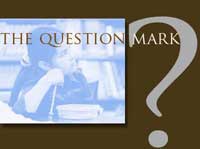| Research Cycle |
Order Jamie's books online with Paypal or a credit card
|
|
|
|
|
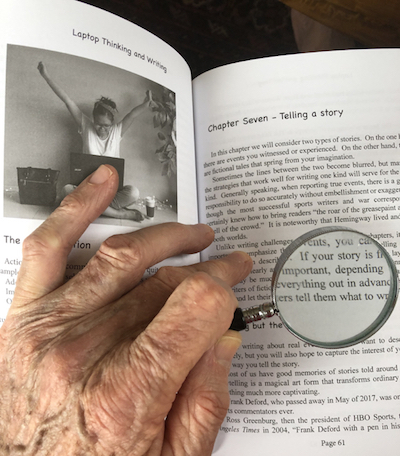
Reading between the lines:
|
|
Can you take a hint? Because so much of life is implied rather than stated, each person must learn how to read between the lines and interpret what is implicit rather than what is explicit.  © iStock.com For students in school, the toughest reading test items often require inference:
These poor results are scandalous, but they receive little attention from the media. Two decades of heavy-handed school reform efforts in the USA dominated by high-stakes testing have produced little progress and may have done great damage to education and schooling as outsiders like Bill Gates have tried to impose a corporate view of reform on schools despite their lack of experience and understanding of schools, teachers and learning.  © iPhoto This embarrassing failure may be explained by the fact that the most demanding test items require thinking and inference. Students must be able to handle surprise and manage items unlike anything they have seen before. Too much school reform emphasized memorization of patterns. Practicing inference with images © J. McKenzie Images like the one above I shot in London a few years back can provide good practice to strengthen students' inferential reasoning. While we cannot be sure of much without speaking with this man, we can make reasonable guesses about his mood and situation given his body language and the way he is seated. The teacher may lead the class through a careful analysis with open-ended questions like the following, encouraging a far-ranging exploration of possibilities and discouraging remarks when apparently divergent ideas emerge - following the basic rules of brainstorming. As discussion proceeds, the teacher asks that each supposition be supported with some kind of visual evidence - details from the image that make the interpretation seem plausible. The same appraoch works well with the photo below of "coal breaker boys" from the Library of Congress. The teacher might ask, "Who do you suppose is the leader of this group?" While we cannot know the correct answer, since none of these boys are still alive, we can make reasonable suppositions based on the ways they are standing. 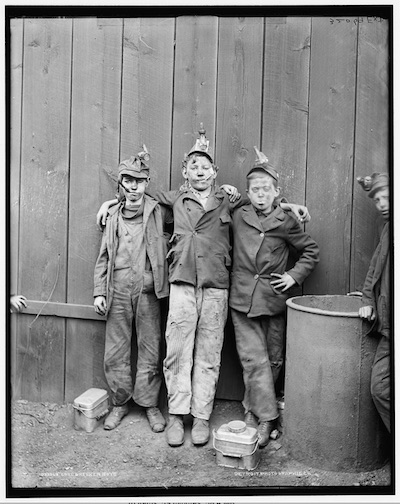
For an extended article exploring visual literacy, go to "Wondering with and about Images." Practicing inference with poetryMost poets employ multiple layers of meaning provided by metaphors and elements that are intentionally ambiguous. It is part of the magic of reading poems like Frost's "Stopping by woods" and "The road not taken" or “Time does not bring relief; you all have lied” by Edna St. Vincent Millay -- the way the poem seems to change over time as we bring new experiences to the reading.Copyright prevents showing those poems here, but there are plenty of good ones at the www.poetryfoundation.org site displaying the poems above. One of my poems will illustrate this inference process. The poem was written after the 2017 terrorist bombing of the subway in St. Petersburg, Russia. Subsequent mass murders and terrorist attacks have brought the poem too much currency. 
When innocents dieThe teacher might ask students to consider the following questions: As discussion proceeds, the teacher asks that each supposition be supported with some kind of evidence - details from the poem that make the interpretation seem plausible. Note that the word "suppose" appears many times in questions suggested by this article. Inference almost always invoves a degree of supposition. The Apple Thesaurus offers related words: belief, surmise, idea, notion, suspicion, conjecture, speculation, inference, theory, hypothesis, postulation, guess, feeling, hunch, assumption, presumptionIt is not mere guessing when a student faces an item on a high stakes test. On multiple choice tests, there will be one correct answer, but some tests require the students to compose and enter the answer in their own words. Practicing inference with paragraphs and longer passagesThere are many sample test items available online. English Language Arts/Literacy Practice Tests are available for portions of the PARCC assessment, for example.Click here to begin the 7th grade literary analysis items.  Building an inference is like building a house or making a case © Sarah McKenzie - http://sarahmckenzie.com It is a matter of collecting clues, details and hints of various kinds until an idea emerges that was not directly stated. It is somewhat like putting together the pieces of a puzzle, but there is no picture on a box to tell you in advance what the puzzle should look like. 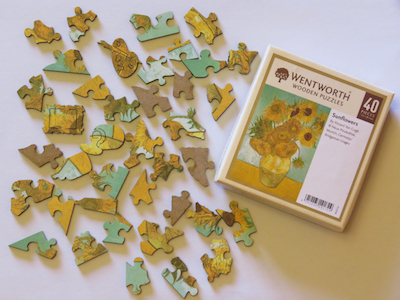 © Wentworth Wooden Puzzles - https://www.wentworthpuzzles.com/ These metaphors help students to visualize the process of collecting and synthesizing ideas. Many of the inference questions that are frustrating American students on tests of Core Standards and the NAEP tests, present them with long passages like the one below and ask students to figure out what the author intended.  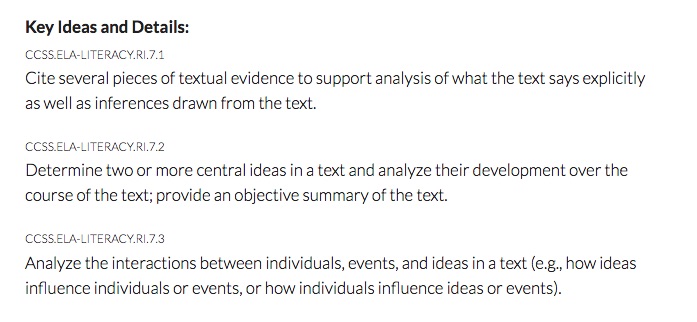 The test asks students to read the poassage and then summarize in their own words the main point the author is making. In addition, they are asked to explain which details from the passage support their answer.
This would be a challenging passage and question for high school students, especially if they must put the answer into their own words and explain which details from the passage support their answer. The author clearly feels bad about what he sees as the decline of civility -- polite discourse -- and the rise of violence in American society. But what is his point? He seems to be blaming political leaders for the problem and while he does not say so explicitly, he is hinting that they should change their behavior. Even a multiple choice version of this question would be challenging because test designers usually include answers called "teasers" that are almost as good as the correct answer. What is the main point the author makes in this passage?
It is easy to dismiss the gun control answer because there is no hint of that anywhere in the passage, but both #2 and #3 are tempting because there are explicit statements that point that way. Grasping #4 as the correct answer requires the reader to "put 2 and 2 together" and see what case the author is making.  © iStock Providing Daily PracticeIf we value our students' ability to read between the lines, then this kind of inferential reasoning must become a daily challenge. It is not enough that students find answers that are directly stated. They must also be capable of creating answers based on reasonable suppositions. |
